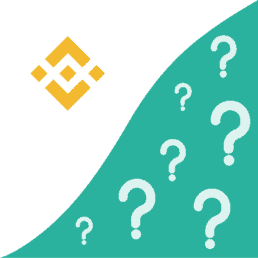What is Proof of Work?
Proof of Work (PoW) is a consensus algorithm that validates blockchain transactions and adds new blocks to a blockchain network. This consensus algorithm is at the heart of blockchain as it safeguards the entire network.
A blockchain is a ledger of data, chained together in a sequential manner. A group of blockchain transactions are stored in a block and added to the network. To keep data accurate and legitimate on blockchain networks, transactions are usually validated by miners who earn a reward for their work. As the name suggests, the Proof of Work algorithm requires miners to legitimise transactions on a network by working out complex cryptographic puzzles. If you sent some crypto coins to your friend, this equates to one transaction. But how is this transaction validated and added to the network? The answer to this question lies in the Proof of Work consensus algorithm.
How does it work?
Let’s walk through the entire process.
This process of validating transactions of a block on the blockchain network is called mining. The people who solve these cryptographic problems are called miners.
A certain amount of transactions are bundled in each block. Miners validate these transactions by solving cryptographic puzzles (Proof of Work problems).
The Proof of Work consensus algorithm produces a ‘challenge problem’. The solution to this problem is a valid cryptographic hash function that verifies the transaction. The difficulty of the problem is such that it is solved within an average timeframe. For instance, a new block is added to the bitcoin blockchain every 10 minutes.
Once the miner produces a valid hash, the block is verified and it is permanently added to the blockchain.
The Proof of Work problem is easily verifiable by the blockchain but moderately complex to solve.
Mining requires a lot of computing power and is a competitive process with the first miner to solve each problem of the block is rewarded with crypto coins. Once verified by miners, the legitimate block is then added to the blockchain network.
Security
As every transaction is verified, only legitimate blocks are added on a blockchain network, safeguarding the blockchain from tampered blocks. It also means maliciously spamming the blockchain network with a large number of blocks becomes impossible, as mining requires such high computational power.
Drawbacks
Mining consumes a large amount of electricity.
Additionally, there is an emerging trend of the existence of ‘mining pools’. These pools solve the cryptographic puzzles in parallel by distributing the problem among various pool participants to enable an element of control over a blockchain network. This poses a major threat to decentralisation.
Some mining pools or miners use ‘Application-specific integratedasic circuits(ASIC)‘, to achieve high computational ability. This results in centralising the process as wealthy mining pools control the validation. The blockchain is also susceptible to a 51% attack. This is a condition where a miner or group of miners control 51% of the network’s mining power, computing power or hash rate. Such an attack could tamper with new transactions taking place or being confirmed.
Summary
Proof of Work is a consensus algorithm that validates blockchain transactions that requires the solving of a cryptographic puzzle to legitimise transactions. The people who solve these proof of work problems are called miners.
The process of validating all the transactions of a block and adding it to the blockchain network is called mining. Mining is competitive, the first miner to add a particular block to the network is rewarded with crypto coins.
Certain loopholes like mining pools and using ASICs to solve the proof of work problems pose a major threat to the blockchain network.
Learn more about cryptocurrency
What is Bitcoin?
What is crypto
What is Ethereum?
What is crypto
What is Cryptocurrency?
What is crypto
What is a Blockchain?
What is crypto
What is Money?
What is crypto
What is DeFi?
What is crypto
What is Chainlink?
What is crypto
What is a Whitepaper?
What is crypto
What is an ERC-20 Token?
What is crypto
What is Proof of Stake?
What is crypto
What is Stellar?
What is crypto
What is Tezos?
What is crypto
What is a Stablecoin?
What is crypto
What is Litecoin?
What is crypto
What is Cardano?
What is crypto
What is NEO?
What is crypto
What is Monero?
What is crypto
What is Bitcoin Cash?
What is crypto
What is Polkadot?
What is crypto
What is Basic Attention Token?
What is crypto
What is Solana?
What is crypto
What is Binance Coin?
What is crypto
What is Dogecoin?
What is crypto
What is a Bitcoin ETF?
What is crypto
What is a NFT?
What is crypto
Sign up to our newsletter
What is cryptocurrency?
Where to buy cryptocurrency?
How to buy cryptocurrency?
Manage cryptocurrency
Disclaimer
Our publications do not offer investment advice and nothing in them should be construed as investment advice. Our publications provide information and education for investors who can make their investment decisions without advice. The information contained in our publications is not, and should not be read as, an offer or recommendation to buy or sell or a solicitation of an offer or recommendation to buy or sell any cryptocurrency. Prices of cryptocurrency may go down as well as up and you may not get back the original amount invested. You should not buy cryptocurrency with money you cannot afford to lose. To see our full disclaimer click here.
























